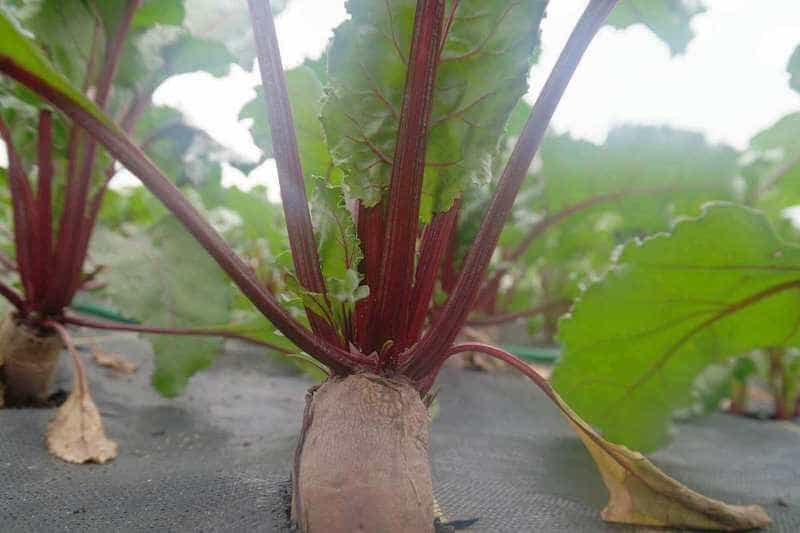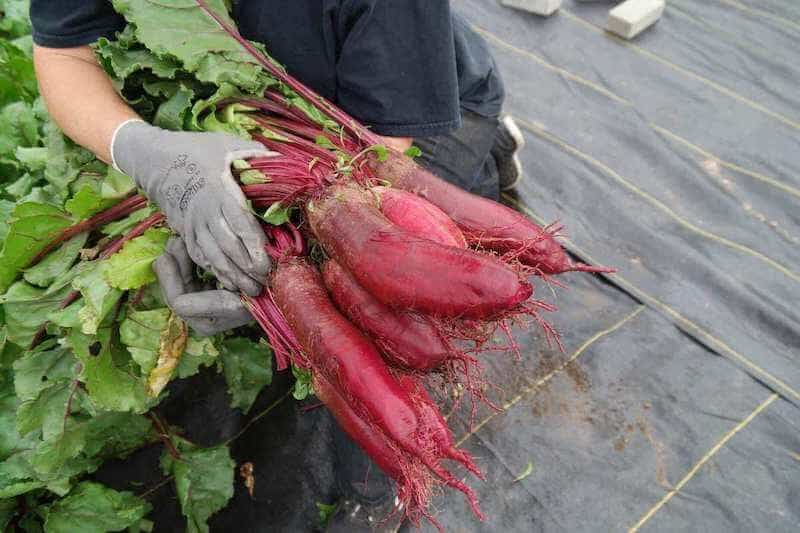
About 300 years ago, farmers began growing sugar beet as an alternative source to expensive imported sugar from sugar cane. Artificial sugar, developed more than 50 years ago, has lowered sugar prices to the point where farming sugar beet is no longer economical.
Although they stored well, they were never served as a table beet because they were tough, hard to cook and tasted horrible, Fortunately, new varieties of beet have been bred for taste, look and texture and have gained in popularity with consumers who are discovering, most for the first time, how nutritious beets are. Interestingly, beet root along with beet tops are packed with more minerals and vitamins than kale.
Beet root can keep for an entire winter without losing much of its nutrition if stored in a cool dark place. Left in the ground to during winter, it will sprout new growth in the spring using the overwintered beet for food. New growth beet tops can be cut and harvested again and again from regrowth the entire season.
Beet skins are more nutritious that beet tops and should be peeled and served on raw salad, added as an ingredient to casseroles or juiced.
Present day beet farms are entirely dependent on machinery to till, furrow, seed, weed, water, harvest, and pack. A moldboard plow is used to till a field that is fallow, inverting that soil to a depth of 9 inches or more. A disk ripper is used to till working farm soil and serves as a finisher to prep the soil for the next step, fertilization. A tractor pulled manure spreader broadcasted aged animal manure over the entire field onto of the freshly tilled soil. A second tilling works the fertilizer into the soil. After a week or so, a disk cultivator defines parallel furrows across the field and then a pneumatic seeder sows and covers beet seed. A first hoeing with a rolling cultivator weeds the furrows with a second hoeing 6 weeks later. A tractor pulled lifting fork pulls the beets to the surface and onto a conveyor to a beet truck that runs parallel to the harvester.

All farms in the West of more than 5 acres and 80% of the farms in the East use mechanized agriculture to grow food. That’s almost the entire world’s agriculture system dependent and machines and manmade fertilizers. Considered a boon to the global food chain 50 years ago, industrialized agriculture is today, the industry most responsible for degrading the planet.

A more sustainable approach to farming must be adopted if we are to survive this mechanized onslaught on the planet. Regenerative agriculture and adoption of water saving irrigation technologies would be a step in the right direction. Crop Circle Farms ® has developed an agricultural system that grows more with less dramatically minimizing the present impact agriculture has on the planet.
Crop Circle Farms grows beets in circles, Crop Circles ® to be more specific. Growing beets in a geometric pattern rather than cultivated parallel rows creates a more efficient use of space. Crop Circles use 90% less water, 95% less fertilizer and increase production per acre foot.
Some of the most popular beet varieties include Detroit Dark Red for preserving, Cylindra for pickling and Golden for the table.

Crop Circle Farming uses a “targeted agriculture” strategy to feed each plant at the root instead of irrigating and fertilizing large areas with no production purpose. The system optimizes plant growth and virtually eliminates unwanted weed growth leaving beets to grow without competition from other plants for nutrient. Eliminating plant competition in combination with targeted agriculture techniques grow big, beautiful beets.
Ready to transform your land into a high-yield, sustainable farm? Let Crop Circle Farms design and build a custom, low-impact, and water-efficient farm tailored to your needs. Double your income and cut your costs in half! Contact Us
Help us expand our mission to revolutionize agriculture globally. We are seeking partners to implement Crop Circle Farms to feed people in need. Together, we can build scalable food production systems that save water, reduce costs, and feed thousands of people. Contact Growing To Give